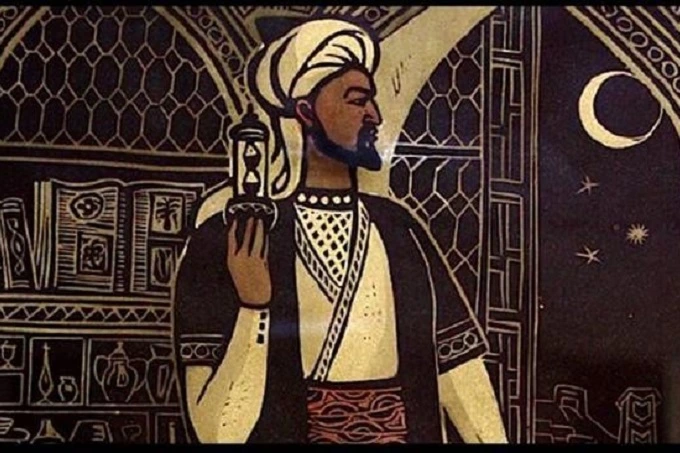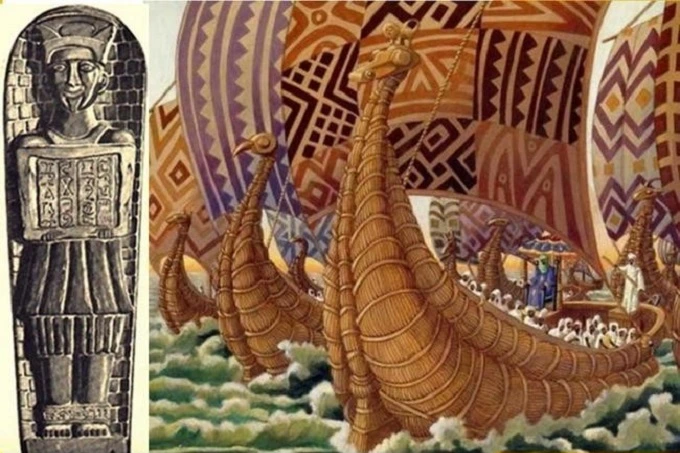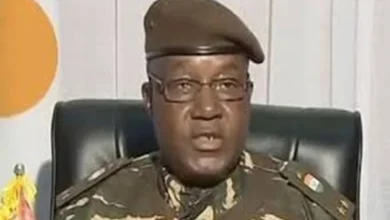Africans may have been in America long before Columbus
African presence in early America

A group of Malian explorers commanded by Mansa Abu Bakr II set off on a voyage to find new territories on the other side of the Atlantic Ocean in 1310. These African explorers were belive to have visited the American continent even before Columbus.
These ancient explorers left a mystery sculpture in the Brazilian bush, which has since become a source of fascination. The item known as the Brazil Tablet, which was eventually attributed to the famous explorer Percy Fawcett, gives interesting evidence for a probable colony established centuries ago by the lost sailors.
We have learned a great deal about these early Malians in the New World over the course of the previous several years. But, do ancient inscriptions rewrite the history of the Americas, asks William James Veall in “Sea-Farers from the Levant: Do Ancient Inscriptions Rewrite the History of the Americas”?
Veall’s study clearly demonstrates that Malians were present in South America. According to some researchers, Malian adventurers established themselves in the Four Corners region of the American Southwest, where they left many inscriptions, such as those found on the Elephant Slabs of Flora Vista.

Summary of the Evidence Supporting the Existence of a Malian Colony
The “Brazil Tablet” is the most shocking piece of proof of Malians living in Brazil. A tablet discovered near the Culuene river, according to Col. P.H. Fawcett, was discovered in uncharted territory. The fact that this Tablet had “African pigment” and characteristics was one of the most intriguing aspects about it.
The individual shown on the Brazil Tablet belonged to the ruling class of the Malian colony in Brazil. For example;
- 1) the crown worn by the personage on the Tablet suggests a Manding origin;
- 2) Manding inscriptions inscribed across the chest and feet of the figure; and
- 3) evidence of breeches, which correspond to the Manding style military uniform worn by the personage depicted on Fawcett’s Brazil Tablet, which suggests a Manding origin.
Col. Percy H. Fawcett, a well-known explorer of Brazil, is credited with introducing the world to the 10-inch (25.4 cm) high black basalt sculpture, which some experts refer to as the Brazil Statuette. Sir H. Rader Haggard, the author of King Solomon’s Mine, presented the figurine to Col. Fawcett in honor of his service (1885).
The statue was purchased by Sir Haggard in Brazil. In his opinion, the statuette was an artifact from the ancient cities in Brazil that Portuguese explorers claimed to have discovered because 14 of the 24 characters on the statuette are found on pre-Columbian Brazilian pottery and inscriptions that Portuguese explorers discovered at ancient cities along the Amazon river.
The Brazil Tablet depicts a guy who is carrying a plaque with an inscription over his breast. In addition, inscriptions have been placed at the feet of the person in question. In Harold T. Wilkins’ book: “Mysteries of Ancient South America”, he includes a number of inscriptions from ancient Brazil that were previously unpublished. Of addition to Piracicaba, Brazil, there are inscriptions in this category there as well. There was also another group of inscriptions that were placed in regions that were ideal for human habitation.
Once a secure location for their colony was identified, the Manding immigrants began constructing stone cities or mound habitations. Portuguese explorers were responsible for the discovery of one of these vanished towns in 1753.
Figuring out who the figure on the Brazil Tablet is
Wilkins has copied many of the inscriptions discovered by the Portuguese explorers. Padre T. Menezes discovered similar writings in the Brazilian state of Bahia, along the Para-oacu and Una rivers, in the town of Marajo. ‘They were etched above a tomb,’ Padre Menezes said. Using the values of the signs found in Mande writing systems, these inscriptions may be read and translated into other languages. We’ve been told that the individual who was buried in the tomb was called Pe by the locals.
The individual shown on the Brazil Tablet looks to be a member of the Malian aristocracy. According to Richard Hull’s Munyakaye: African Civilization Before the Bature, the Mali marines wore white hats on their heads and a white tunic.
According to E. Murphy’s History of African Civilization, the Malian military’s uniform consisted of sandals, loose-fitting cotton trousers extending down to the knees, a sleeveless tunic, and a white headgear made of cotton or leather and ornamented with one or more feathers.
The man shown on the Brazil Tablet seems to be dressed in the garb of a Malian sailor. This individual was most likely a Malian king who had traveled to Brazil. In the manner reported by Europeans who visited the Mali Empire, the person is dressed in a tunic with no sleeves, a skullcap, and pants that extend to his knees. According to those who have studied the item, another noteworthy element of this Tablet is the fact that it has “African pigment” and features.
Other Malian settlements have some similarities to this one
Dr. Winters released a decipherment of these inscriptions in 1977, which may be seen here. It contains information on the burial site and the cause of death of a Mansa or Mande King. The Mansa on the Brazil Tablet seems to have been called Be, according to the evidence. Be was buried in what seems to be a hemispherical tomb erected beside a cave, according to the text. For example, the typical Mausoleum for Mande monarchs, such as the tomb of Askia, were constructed in the shape of pyramids.
The Malians of South America also erected their houses on top of mounds to protect themselves from the elements. The countries of Panama and Venezuela, in addition to Brazil, seem to have been their principal centers of residence.
There are several megalithic buildings in Brazil that seem to be replicas of the prototypes discovered in Africa. For example, in Alagoas, we can see several stone monuments similar to those found in West Africa, such as stone circles produced by rocks put vertically on the ground, which are formed by rocks placed vertically on the ground.
Sambuquis are the name given to the settlement mounds found throughout Brazil. There are radio-carbon dates for certain sambuquis that go back to prehistory, but a large number of the mound sites where objects have been discovered are associated with the civilizations of Venezuela and have dates that are congruent with the Malian journeys.
Last but not least, the ancient graves and the Brazil Tablet show that Malians were most likely the first to arrive in Brazil. Due to the fact that the elite person shown on the Brazil Tablet is dressed in a costume linked with Malian marines, the Brazilian statuette is a valuable item. According to recent discoveries, a tomb dedicated to Pe may really be the grave of Be, who is the same figure shown on the Brazil Tile.
We might surmise that Mansa Abu Bakr II and his expeditionary army left the city of Niani by canoe and went down the Niger to the Gulf of Guinea. Following their arrival, the explorers were most likely carried out into the Atlantic by the Guinea Current, which eventually met the South Equatorial Current. It is possible that the Mali explorers were transported to Brazil by the South Equatorial Current.
The ships owned by Mansa Abu Bakr II will not be the last boats to be sent to Brazil. For example, in 1500, Alvares Cabral’s ship was kidnapped by the North Equatorial Current and transported quickly to the place where he had been captured before.




